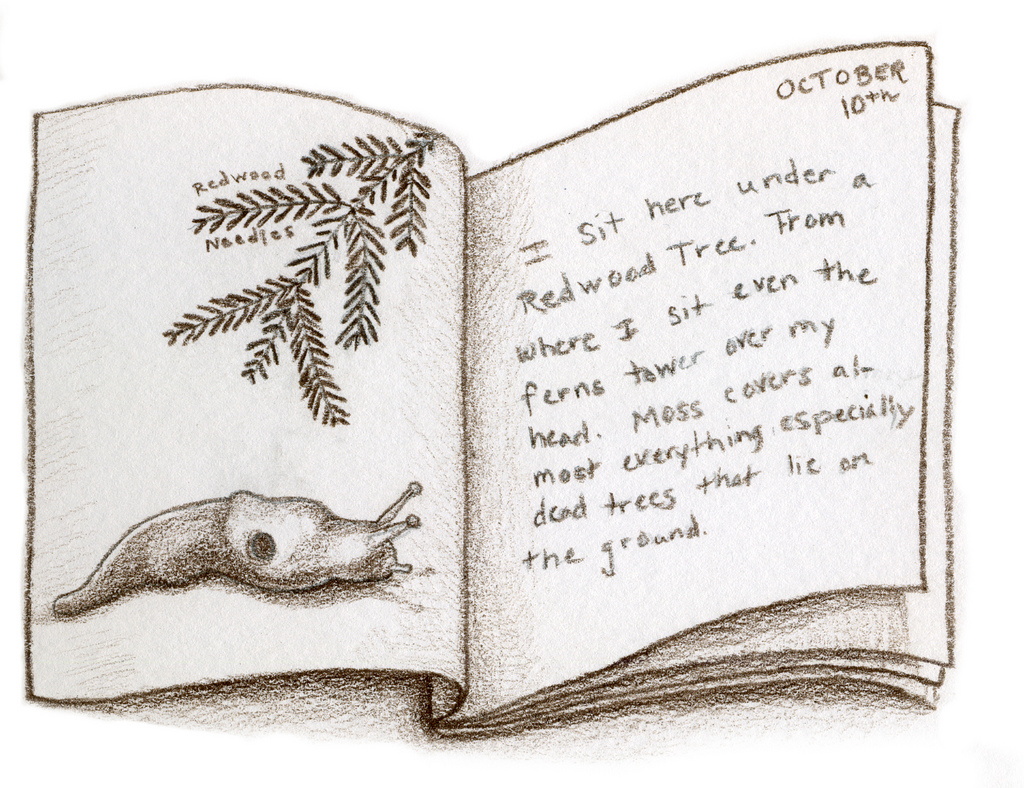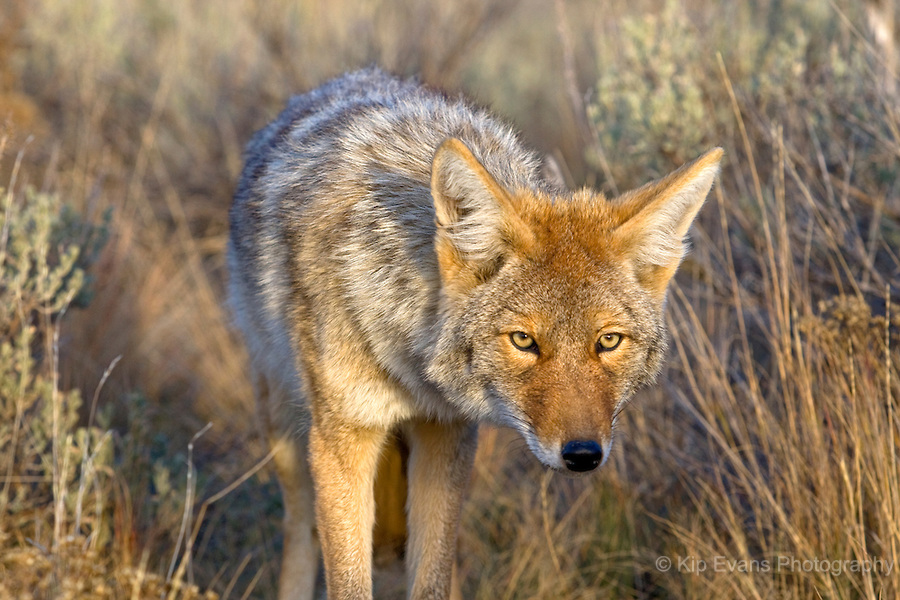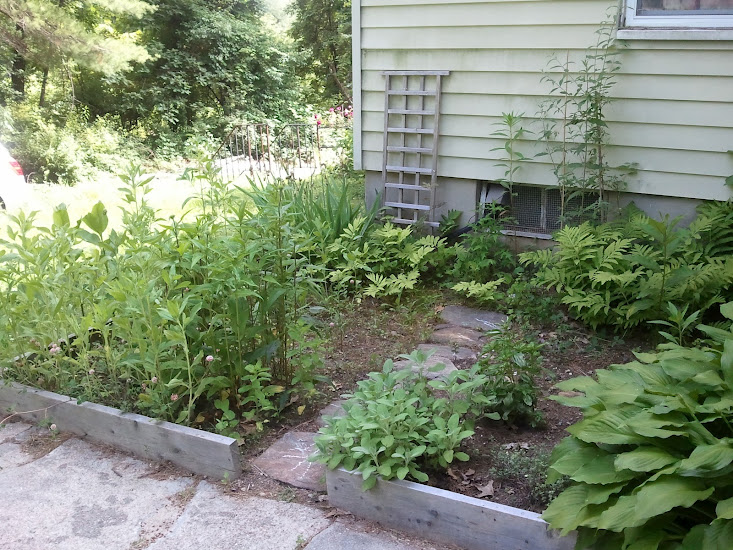
I know that keeping a nature journal sounds pretty straightforward, but depending on your goal you can turn it into more than just a journal. One of the objectives for this class is to help participants look closer at the world around them. With this in mind I’d like to help make your journal a more effective tool and road map for your travels in nature.
Firstly, there’s no right or wrong way to capture what you see and experience in nature. And there are many, many ways to collect this information. You can write a narrative of what’s around or record you surroundings in a poem. Some folks draw or paint; I sometimes use an ‘art journaling‘ technique to capture something specific:

Many like to sketch what they see – this a good way to capture details of your subject. Even if you think you don’t have the skill to draw stick figures, never mind a natural object, try it anyway. I have zero ability when it comes to drawing and painting (which I’ve made painfully obvious by sharing some of my work below), yet I still find this an effective way to journal. And of course, if you work on it regularly you’ll find that you have (or can develop) a bit of skill after all! Claire Walker Lesley has written The Book (in my opinion) on nature journaling – actually she’s written several – and through her workshops I’ve been inspired to keep drawing and sketching as part of my journaling process. Her book Keeping a Nature Journal is my favorite, and I highly recommend it.

I’m going to step beyond journaling basics now to the next level of observation and record keeping. If you want to use your nature journal to help you look more carefully at the natural world, I strongly recommend adding two more methods to your journaling repertoire.
The art of looking deeply at the natural world comes from learning to ask questions of what’s around you. To begin, go back to the basics of looking at a particular object. The goal is to see this track, or tree, or bird as if for the first time. Then ask yourself questions about what you’re seeing: why does that bird fly out from the tree and go back to the same spot again and again? What caused that oak to split so close to the bottom? Really take the time to look closely, even if you’ve seen ruffed grouse tracks or that same maple a zillion times. Never take for granted that you’ve seen all there is to see about any aspect of nature.
Another tool to consider developing is collecting data. When does casual observation change to data collection? What’s the difference? When you record data, you do so in an organized, objective and homogenized way. This sounds like a much colder way to interact with nature but it has many benefits, and can be done side-by-side with more personal note-taking and journaling. One benefit to consistent data collection is that the records you will have about your study subject(s) and/or location will grow over time and will become extremely informative with a big picture view of what’s happening around you.
But careful note taking can be used beyond our own backyards (or sit spots). There are many citizen science projects that rely on data collection from a wide range of individuals, on many subjects. Having your recorded observations in a standard format (depending on the project) and contributing to a larger scientific study is an incredibly rewarding way to make use of the skills you are developing. If you’re interested in submitting your observations to a citizen science project, get familiar with the project in advance and their requirements for data collection.
Here’s an example of a data collection form from the citizen science project at naturemappingfoundation.org:

For more recommended citizen science projects, visit my friend Michelle’s blog Rambling Woods.
As you go out to your sit spot over the next few weeks, spend some time not just journaling, but asking those questions that help you see deeper into the natural world. And please share what you’ve seen and learned in the comments below!
If you haven’t been to the landing page for this class, you can visit it here: http://wp.me/p2cbJr-Z3.



Very good post. I do have a couple of the Walker books and try to draw which I am bad at…. Michelle
Did you see my pictures? Don’t let your own opinion of your work stop you from creating! 🙂